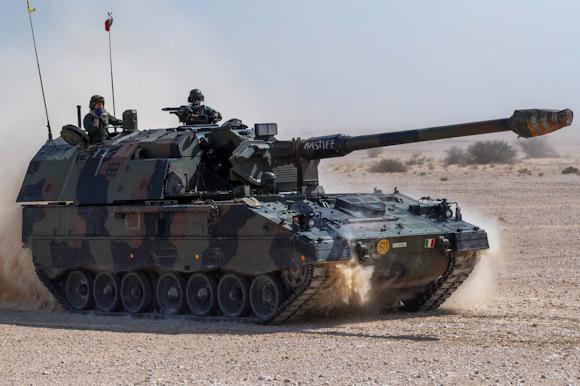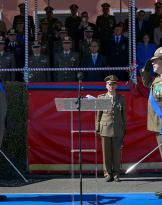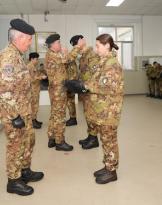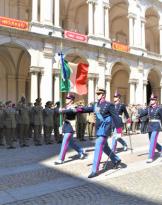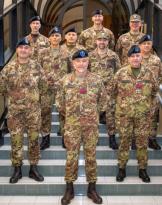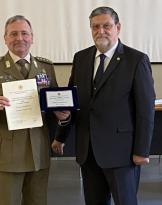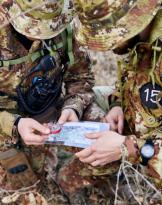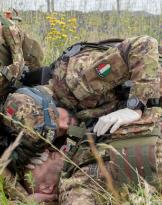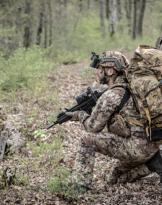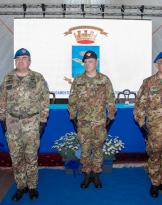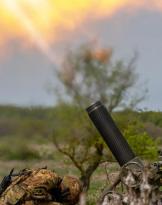Today we celebrate the anniversary of the Artillery weapon, symbolically connected, for historical facts, to the battle of the Piave on 15 June 1918, when the Artillery of the Royal Italian Army played a decisive role in guaranteeing the continuity of fire that disrupted the advance of the Austro-Hungarian Royal Army which launched, on that occasion, its last major offensive of the First World War. In fact, on the night of June 15, 1918, the first attack of the battle was launched which, the illustrious poet Gabriele D'Annunzio, renamed with the name of "Battle of the Solstice".
The decisive role recognized to the Artillery for the final success, allowed it to earn the third Gold Medal in the field, granted with the following motivation: "Always and everywhere, with self-denial he lavished his valor, his skill, his blood, facilitating the Infantry. In a marvelous contest of heroism, the troubled path of victory for the greatness of the Fatherland".
The technological evolution of modern and diversified operational scenarios characterize its primary role in the study, experimentation and acquisition of new weapon systems and command and control instruments, also in the NATO context.

The peculiarities in the support of terrestrial fire and in the defense of airspace are the basis of the Artillery system, which manages and coordinates the sensors on the ground for the surveillance, acquisition and engagement of targets also in the third dimension.
The Artillery Weapon is made up of specialties Land e Counter-aircraft. There are eleven land artillery regiments, eight of which in direct support, included in the maneuver brigades and three in general support, dependent on the artillery command. In line with its historical technical functions, the Artillery Weapon also performs important tasks in the Chemical, Biological, Radiological and Nuclear (CBRN) field where it has demonstrated its professionalism on the occasion of the fight against the Covid-related pandemic. 19, through the use, at the Defense level, of the personnel of the 7th CBRN "Cremona" Defense Regiment who operated according to their own peculiarities in the field of detection and remediation of contaminants.
The Terrestrial Artillery also counts among its competences the activities related to Information Operations, the education and training of Joint Terminal Attack Controller (JTAC) of the Armed Force, through diversified innovative methods, including the simulated one, boasting one of the five NATO national training and virtual development centers.
 The Counter-Aircraft Artillery is the specialty that contributes to national and NATO air defense, through a command and control organization and tactical control based on the concept of anti-aircraft cluster, a modular and mission oriented structure that creates a stratified and multi-system defense necessary today, even more than in the past, to effectively face the increasingly diversified threats from the third dimension. In this context, the anti-aircraft specialty has already acquired the ability to combat remotely piloted aircraft of the mini and micro category and, in the future, will have to face the evolution of the threat through the introduction, already foreseen, of a new SHORAD system. , as well as by upgrading medium-range systems, further improving anti-missile capability.
The Counter-Aircraft Artillery is the specialty that contributes to national and NATO air defense, through a command and control organization and tactical control based on the concept of anti-aircraft cluster, a modular and mission oriented structure that creates a stratified and multi-system defense necessary today, even more than in the past, to effectively face the increasingly diversified threats from the third dimension. In this context, the anti-aircraft specialty has already acquired the ability to combat remotely piloted aircraft of the mini and micro category and, in the future, will have to face the evolution of the threat through the introduction, already foreseen, of a new SHORAD system. , as well as by upgrading medium-range systems, further improving anti-missile capability.
Thanks to the dynamism and versatility that distinguish it, the Italian artillery embodies the combination of traditions and avant-garde, necessary for the challenges of the future: best wishes to all gunners!






